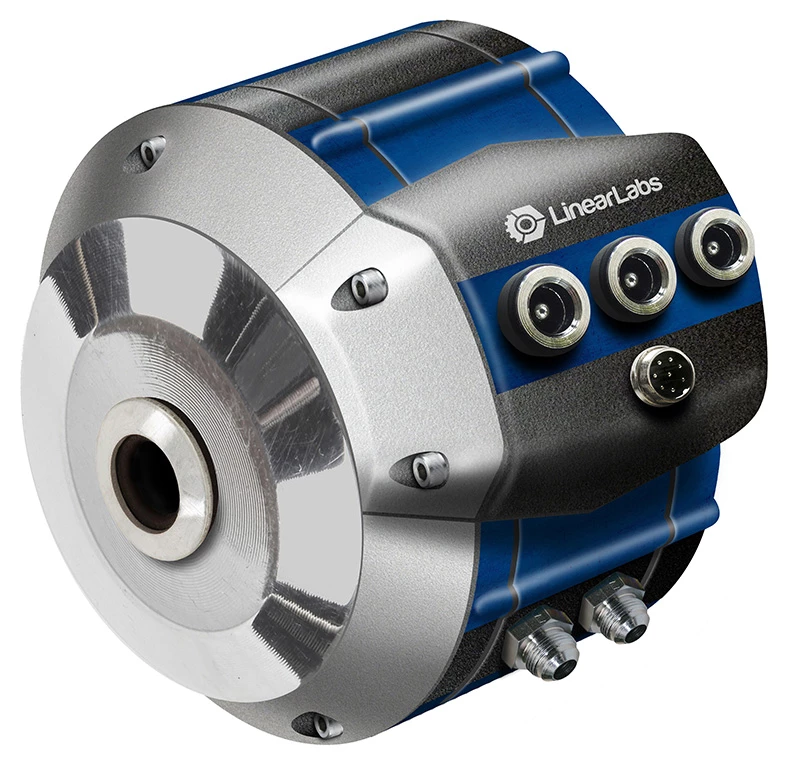A Texas-based startup has raised US$4.5 million in seed funding to develop and commercialize a remarkable electric motor technology. The father/son team claims the design can massively reduce the size and complexity of electric powertrains while also significantly boosting efficiency and doubling the torque output.
Electric cars are stunning performers off the line. In sprint tests they routinely humble high-performance combustion-engined cars many times more expensive than them. But in order to achieve this massive startup torque out of small-diameter, easily packaged motors, most of them use gearboxes. Not multi-speed gearboxes like you'd use with a combustion engine, but single-speed reduction boxes designed to let electric motors spin at high, efficient RPM while the wheels spin slower.
These gearboxes are heavy, complex and expensive – and potentially unnecessary, according to a Texan father-and-son team that claim they've invented a new type of electric motor that can radically simplify the electric powertrain while delivering big efficiency, torque, power and range bonuses.
Linear Labs completed a seed round of financing in April this year, bringing in US$4.5 million to develop its key IP: the Hunstable Electric Turbine (HET), Hunstable being the surname of its two founders, CEO Brad and his father and CTO Fred.

The HET is a three-dimensional, circumferential flux, exterior permanent magnet electric motor with some interesting characteristics. For starters, it runs four rotors where other motors typically run one or two. The stator is fully encapsulated in a four-sided "magnetic torque tunnel," each side having the same polarity, ensuring that all magnetic fields are in the direction of motion, and there are no unused ends on the copper coils wasting energy. All magnetism the system creates is thus used to create motion, and all four sides of the stator contribute torque to the output.
It also achieves field weakening in a unique way. Field weakening is used to increase motor RPM when it's already running at full voltage, by reducing the field flux – which is usually achieved by injecting extra current in an opposing direction. This current injection trades additional speed for motor torque, and reduces the efficiency of the motor. The HET achieves field weakening by rotating one or both of its magnetic end plates out of alignment, meaning that this motor can build extra speed with no efficiency loss. Indeed, overall efficiency climbs at higher speeds.
Where most motors suffer from torque pulsing, or cogging, at slow speeds, which could make an electric car take off in a jerky manner, the HET is able to produce overlapping power pulses around the stator for enormous, smooth torque at slow speeds, and then change its operating patterns by grouping poles together as motor speeds increase. This almost acts like an electronic transmission, emulating six-phase, three-phase, two-phase or one-phase designs and allowing the motor to increase speed without changing its frequency, voltage or current levels.

The result, says Linear Labs, is a truly remarkable motor that produces two to five times the torque density, at least three times the power density and at least twice the total output of any permanent magnet motor of the same size.
It also eliminates the need for DC/DC converters and the aforementioned gearboxes, reducing total vehicle cost and weight significantly, and the company says the motor's inherent efficiencies across different speeds, as well as the weight savings it achieves through component reduction, can draw some 10-20 percent more range out of a given battery pack.
It doesn't cost any more to manufacture than a traditional motor design, or require any specialized tooling – and it can be built without using rare earth metals if necessary. It's easy to cool, at least the stator is, because you can run liquid cooling inside the copper coils.
These are, of course, enormous claims. And while Linear Labs quickly backs them up with quotes from independent experts, there's a long path between disruptive idea and world-changing commercialization. The company says it's looking to implement the motor in a scooter prototype next year, and a car prototype in 2021. The company sees further potential for the motors in multirotors, flying cars, wind power generation and HVAC.
It's also worth noting that the company is comparing its tech to "current market leading top performing permanent magnet" motors when it states the figures above – probably not the highly secretive new permanent magnet-enhanced synchronous reluctance motors that Tesla designed in-house for the Model 3, and has been rolling out on the Model S. Placing one of these in the front of the Model S, and leaving a regular induction motor at the rear gives Tesla one motor optimized for power and torque, and the other for efficiency and range, and in normal driving, this added up to an impressive 10-percent range figure boost for the car as a system.
So while Linear Labs has achieved some terrific test results, and raised the capital to take things further, it remains to be seen how it'll work in practice. We wish this small company all the best as it works to take HET tech to the commercial level.
Check out the Hunstable Electric Turbine in the video below.
Source: Linear Labs via CNET







